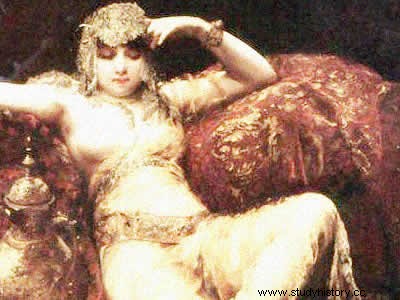
By Rainer Sousa
The sexual issue is a topic that has intrigued many historians over time. After all, the serious and detailed examination of this theme has the great power to reassess the place that sexual practices have in the contemporary world and establish the construction of other logics of meaning for an action that is not universal. In addition, the observation of reports about sexual practice also opens space for the understanding of other political, social and economic issues that go beyond the search for pleasure.
With respect to prostitution, we see that several authors reported offering sex in exchange for some compensation. In Ancient Greece, for example, we observe a hierarchy between prostitutes who could be mere slaves, but who also had artistic gifts or circulated freely among the elite. Among the Romans, the activity was recognized, regulated, and the so-called “wolves” even paid tax on their earnings.
When we reach the same theme in Eastern Antiquity, it is common to hear about the practice of prostitution for ritual purposes. The Greek geographer Strabo, for example, reported that the Assyrians offered their young daughters to practice ritual prostitution at approximately 12 years of age. Herodotus, considered the father of history, described in a disgusting way the Babylonian prostitution carried out inside the temple of the goddess Ishtar.
Not being restricted to the academic world, we see that this notion of the sexual act for religious purposes still has its imaginary explored. At the end of the work “The Da Vinci Code” we have a scene in which sexual practice is resignified in order to move away from the taboos and values that established sex in Western culture. Among reports and representations, we observe that some historians have been strongly questioning these narratives that link sex and prostitution in antiquity with some sacred act.
For this revisionist current, the description of the sexual act between some ancient civilizations came from chroniclers and observers interested in detracting from foreign culture from a moral point of view. In addition, they seek and cite, among the various peoples of the Fertile Crescent, the presence of prostitution as a means of survival and its supply on the streets of urban centers. We thus observe a trend that seeks to end the mythification and mystification of prostitution among the ancients.
Among this dispute, we observe that the sacralization of sex in Antiquity tends to produce a mode of interpretation that does not properly question some documents worked at that time. On the other hand, he advocates a reconstruction of the past in which the exotic tone given to sexual practice gives way to other narratives in which prostitution would have meanings closer to those we recognize in the contemporary world.
